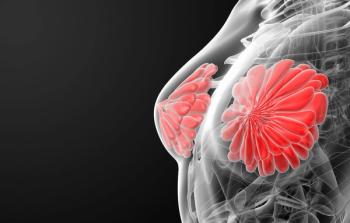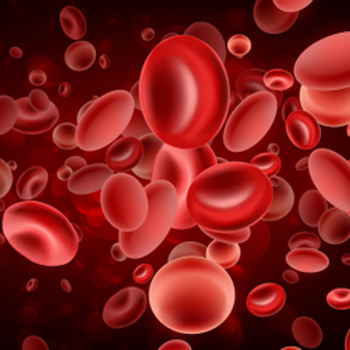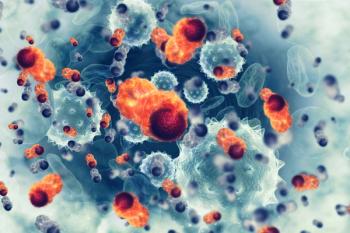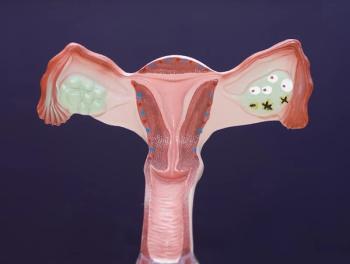
Miami Breast Cancer Conference® Abstracts Supplement
- 39th Annual Miami Breast Cancer Conference® - Abstracts
- Volume 36
- Issue suppl 3
- Pages: 31
43 Early Detection of Breast Cancer–Related Lymphedema: Accuracy of Indocyanine Green Lymphography Compared With Bioimpedance Spectroscopy and Symptoms
Background
The incidence of breast cancer–related lymphedema (BCRL) is highly variable within an average of 25% to 40% occurence among different studies. Although the extent and modality of breast cancer therapies, the timeliness of referrals for evaluation, and the duration of follow-up all have major impacts on BCRL incidence, high variability among studies is also a result of the different diagnostic techniques used and the lack of a standardized definition. The objective superiority of indocyanine green lymphography (ICG-L) for detection of BCRL is in its ability to provide not only an accurate diagnosis but also a chance to intervene and prevent progression. In this study, we aimed to compare sensitivity and specificity of ICG-L with lymphedema (LE) symptoms and bioimpedance spectroscopy (BIS) to detect LE in patients with no clinically detectable swelling.
Methods
Patients who underwent axillary lymph node dissection (ALND) or had greater than 5 sentinel lymph nodes (sLNB) removed, regardless of their LE symptoms, were included in a prospectively maintained registry. All patients had bilateral arm circumferential tape measurements immediately after surgery and were monitored every 3 to 6 months. All patients had no detectable signs of clinical LE. Clinical LE was defined as having any girth difference of 2.0 cm or more in the involved limb as compared with the uninvolved limb. LE symptoms were defined as heaviness, fullness, and/or swelling. The L-Dex U400 or SOZO (ImpediMed limited and Impedi Med Inc) was used for BIS measurements. Subclinical LE was defined as either L-Dex values that lie outside the normal range (between –7 and +7 units) or a 7-unit change between 2 measurements. ICG-L was performed once anytime postoperatively. The near infrared camera system (PDE; Hamamatsu Photonics K.K.) was used for this study. ICG injection USP (25 mg; Patheon Italia S.p.A) was mixed with 10 mL of saline. ICG injections were in the distal aspect of the upper limb on the affected side including the first and fourth web spaces, and if necessary, additional wrist or elbow regions. If there were detectable changes in the lymphatic system after the ICG-L, patients were treated accordingly and are now being followed up for the development of clinical signs of LE.
Results
We enrolled 123 patients, which accounted for 133 arm ICG-L and BIS measurements. The mean age was 54 ± 12 years. Surgical procedures included 46 segmental mastectomies (34.6%), 86 total mastectomies (64.7%), and 1 other surgery in 1 patient (0.8%). SLNB was performed in 57 cases (42.9%) and ALND in 74 cases (55.5%). Based on BIS measurements, 43 arms (32.3%) had values outside the normal range. ICG-L detected lymphatic flow disruption in 63 (47.4%) arms. When compared with ICG-L, BIS had 51% positive predictive value (PPV), 54% negative predictive value (NPV), and 53% accuracy (R = .053; P = .545; AUC = 0.54). When comparing LE symptoms with ICG-L, the PPV of symptoms was 58%, NPV was 66%, and accuracy was 60% (R = .0231; P = .01; AUC = 0.62). Both L-Dex (BIS) and LE symptoms have less than 0.70 AUC-ROC curve; this shows that L-Dex and LE symptoms are not good tools for distinguishing between positive and negative LE in patients who had not presented with swelling.
Conclusions
Minimally invasive ICG-L appears to be the most reliable diagnostic tool available for identifying subclinical LE. ICG-L was able to accurately detect lymphatic flow disruption in patients following axillary surgery, even before clinical signs were present. Adapting ICG-L to the subclinical LE diagnosis protocol provides a great opportunity for earlier identification of problematic areas in lymphatic flow, which can lead to a more personalized plan of care and implementation of appropriate treatment accordingly.
Author Affiliations:
Atilla Soran, Fuat B. Bengur, Wendy Rodriguez, Efe Sezgin
University of Pittsburgh Medical Center Comprehensive Lymphedema Program, Pittsburgh, PA
Articles in this issue
Newsletter
Stay up to date on recent advances in the multidisciplinary approach to cancer.


















































































